Guest Posting by Dean Hansen.
Dean has contributed to Old Naturalist over the years.
I noticed a road-killed deer near my land just east into Wisconsin from my home in Stillwater. I registered the deer online and dragged it onto my five-acre lot. A simple Moultrie “trail cam” was strapped to a tree a dozen feet from the carcass. It didn’t take long for hungry animals to find the carcass.
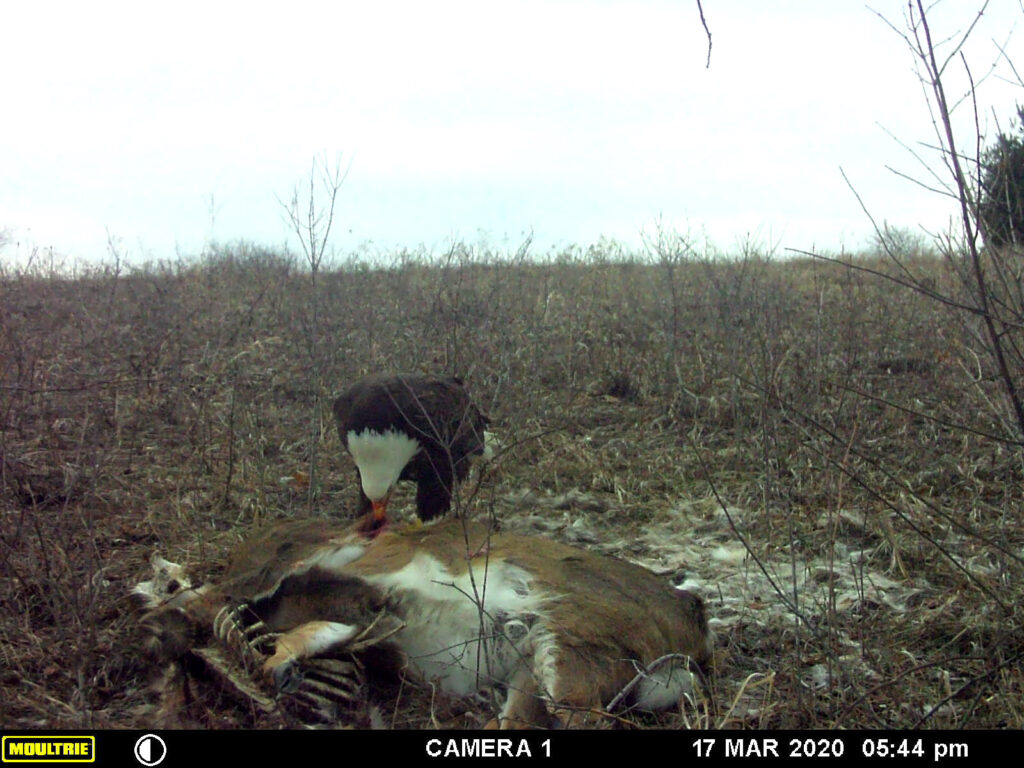
17 March: After surveying the scene, he started to open up the chest cavity to get at the lungs and heart.
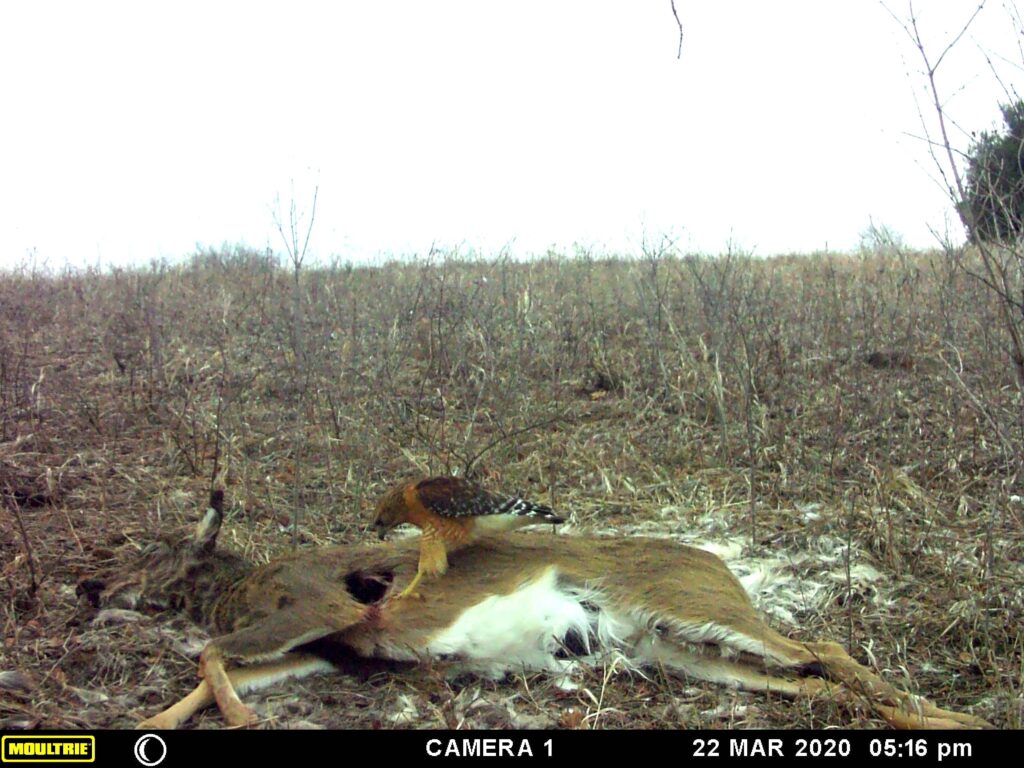
22 March: The surprise of this whole experiment was the appearance of a Red Shouldered Hawk on the carcass. This is a Threatened Species in Wisconsin. A WDNR worker told me that it was quite unusual to see this species at carrion.
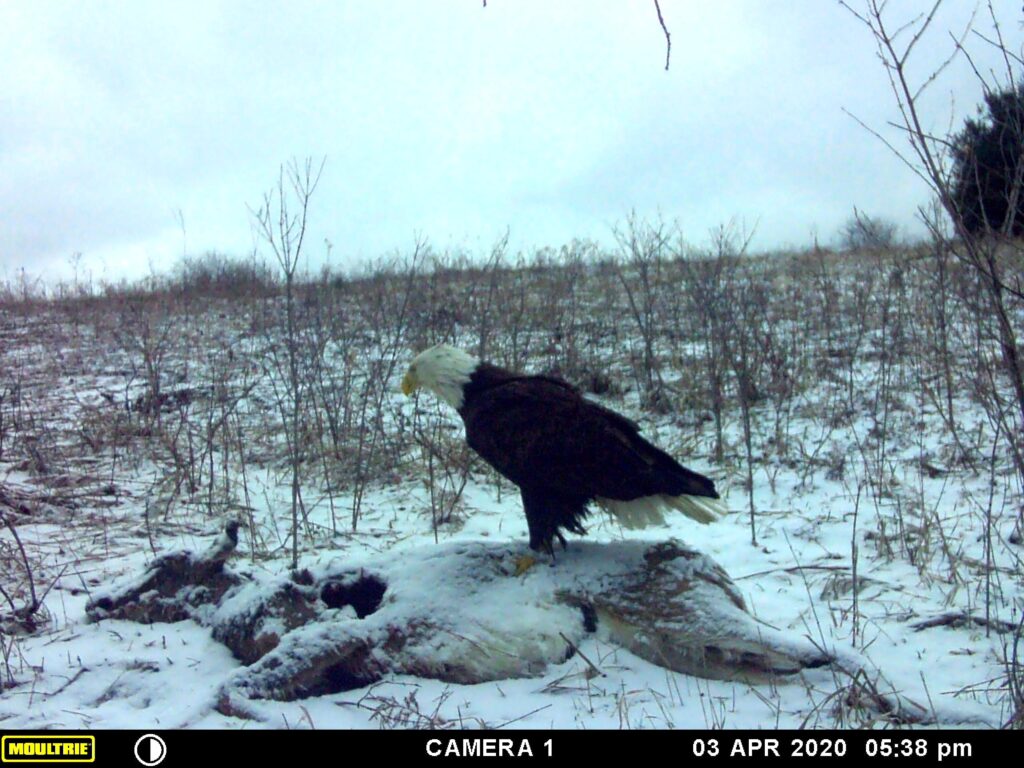
3 April: A late spring snowfall doesn’t keep the Bald Eagle from returning. That’s a really large bird, I’d say.
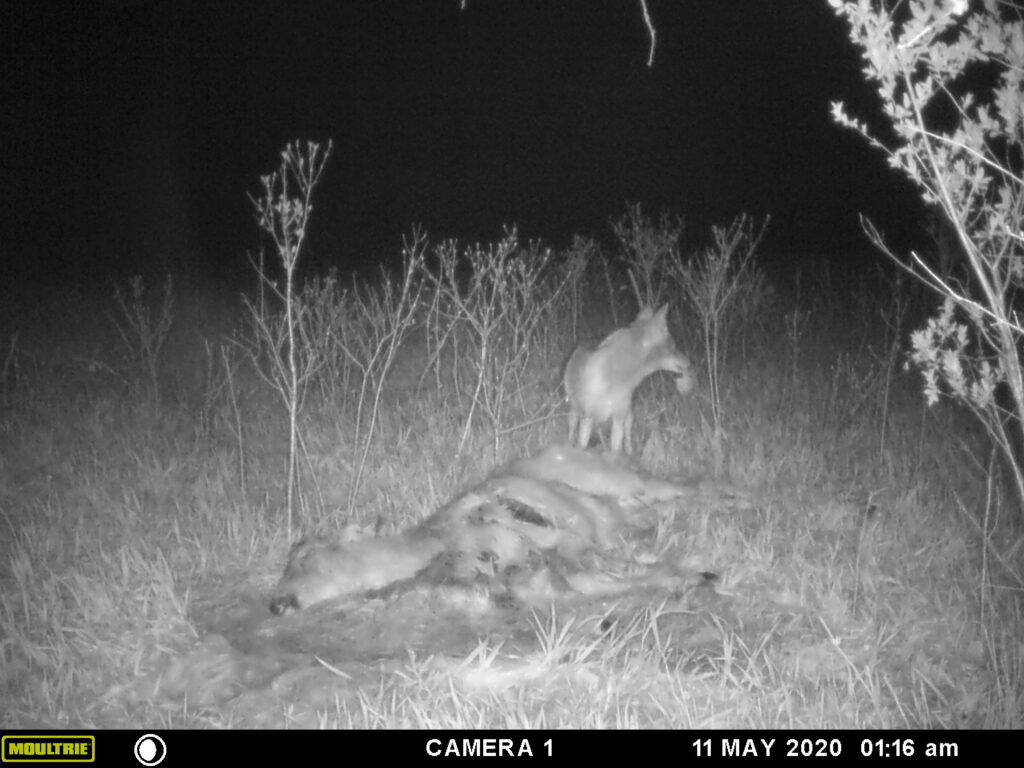
May 11 The coyotes worked on the hind quarters (the “thighs” of the deer), and they even dragged the carcass noticeably to the upper right of the frame.

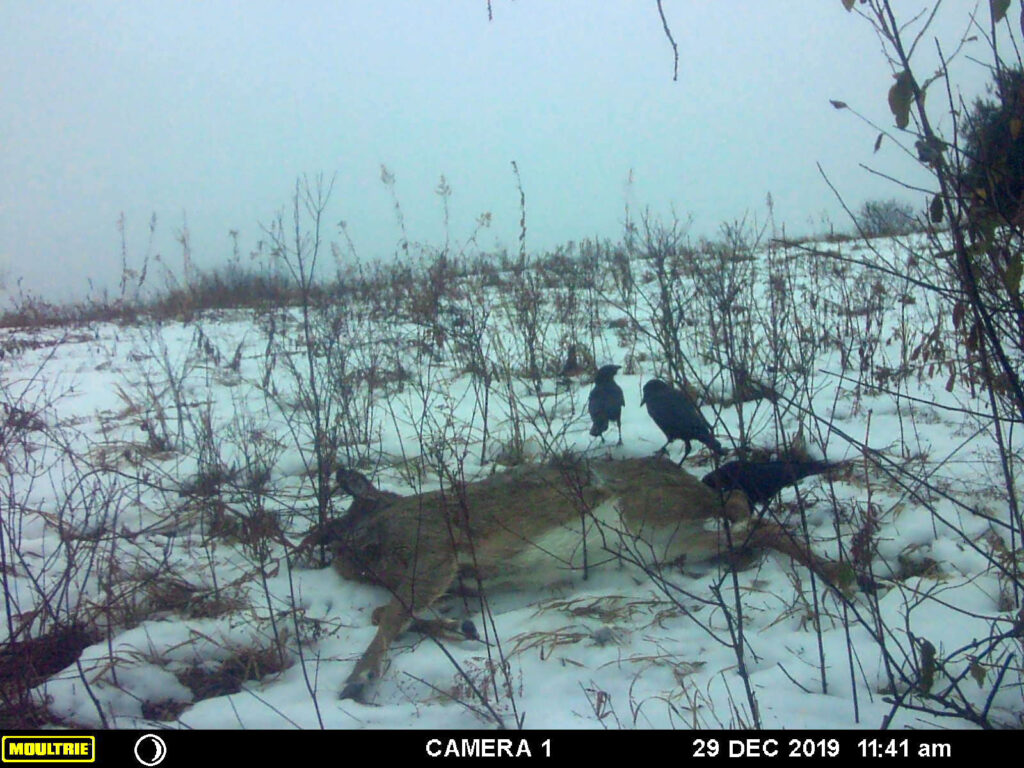
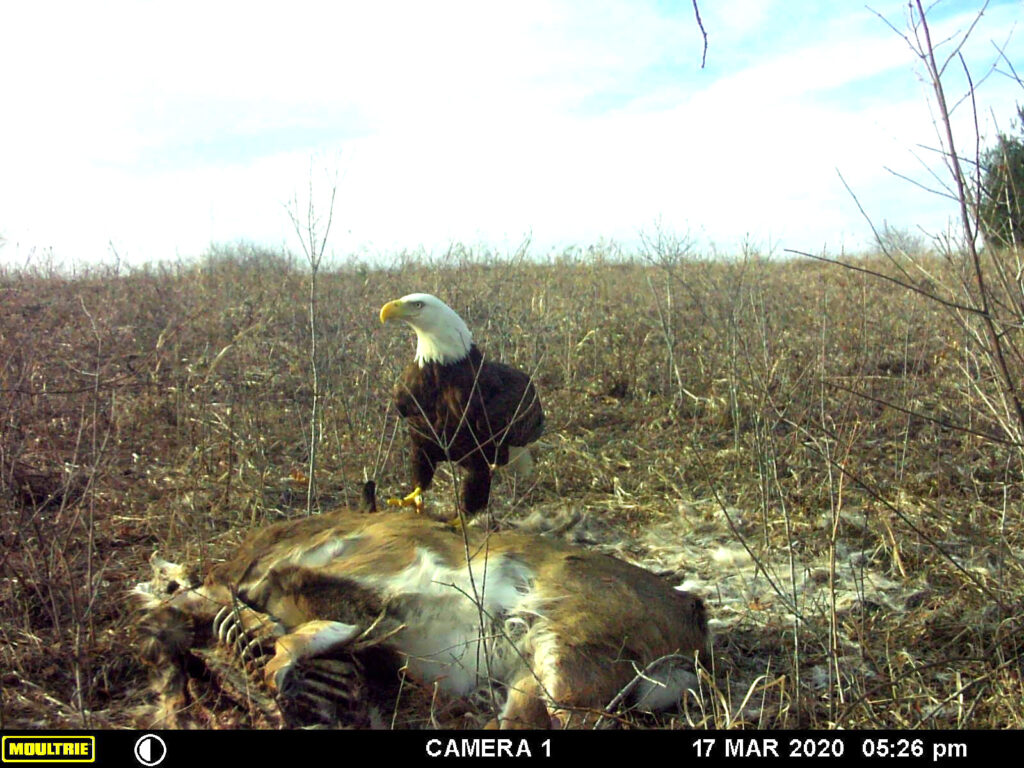
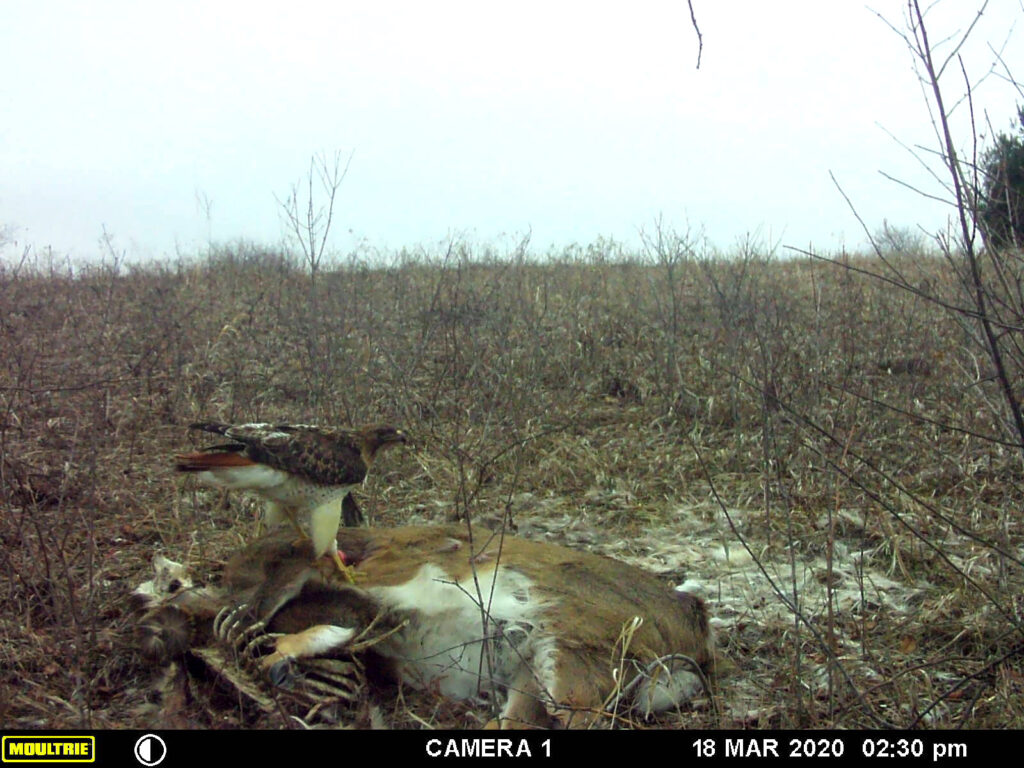
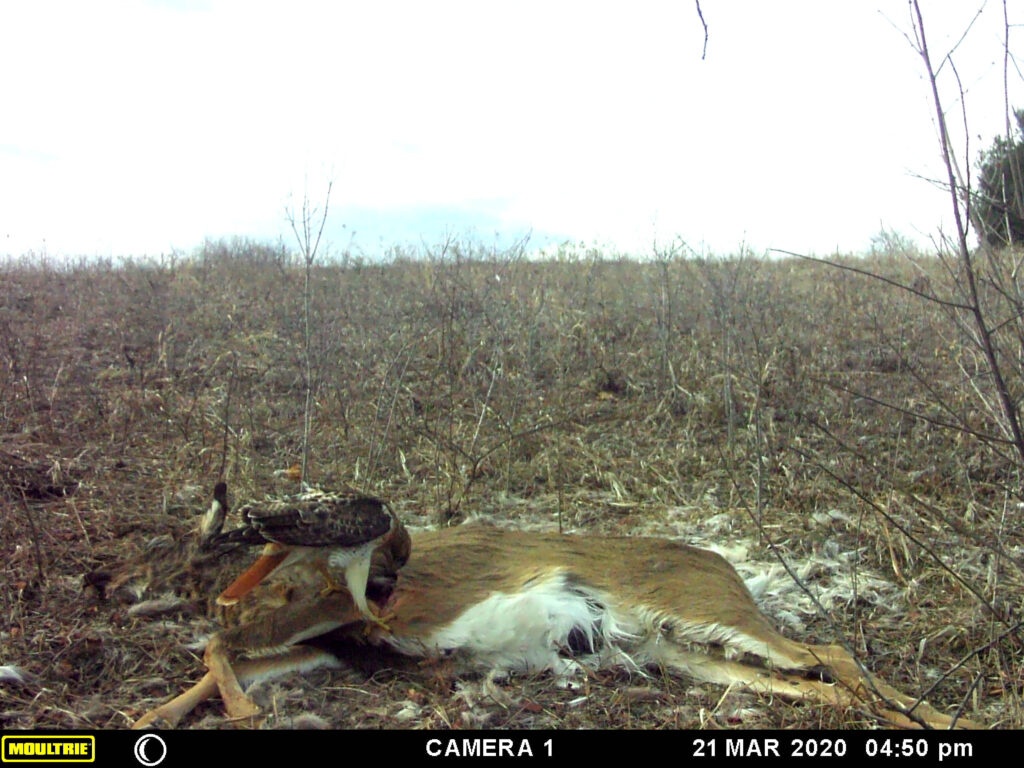
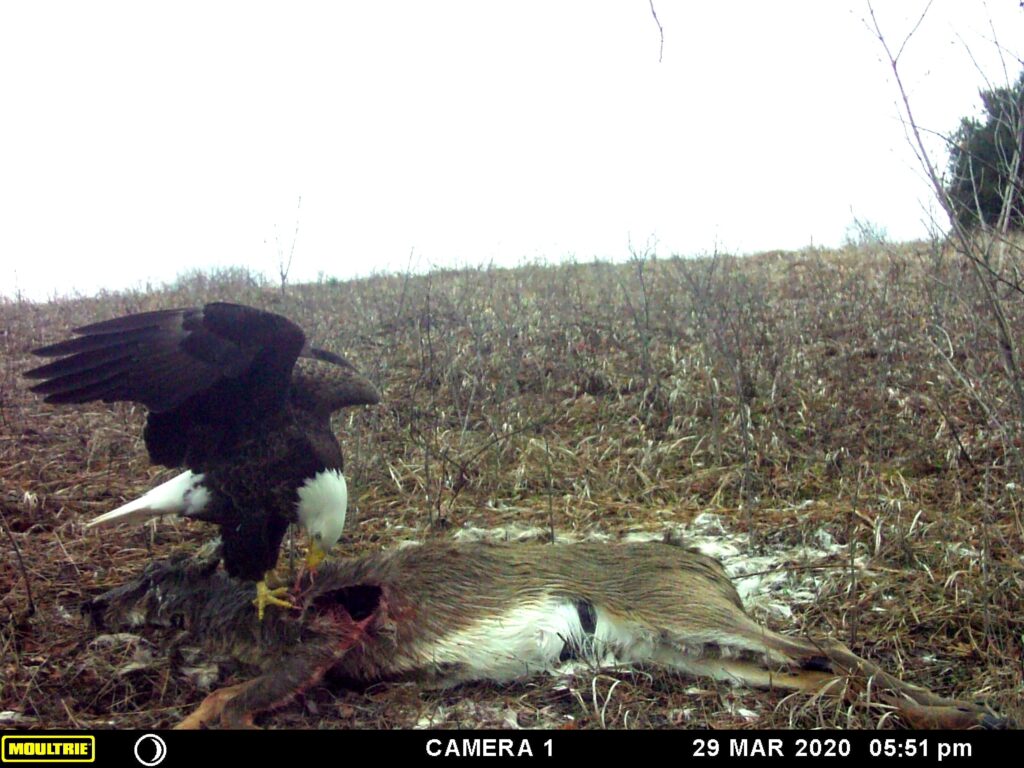
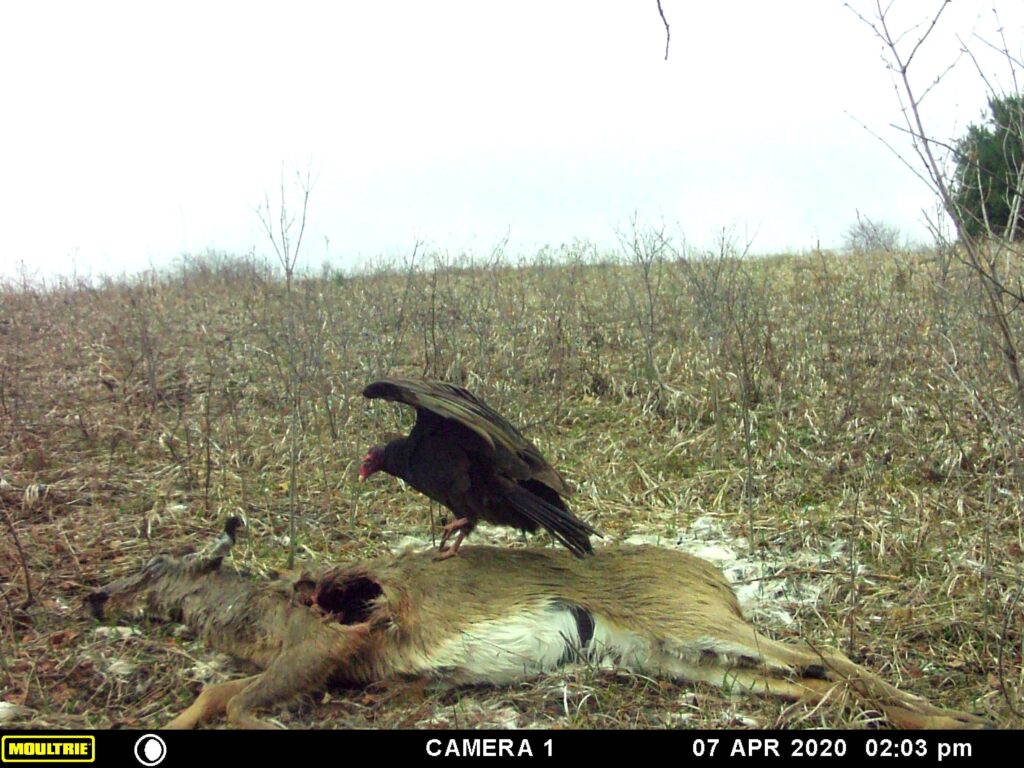


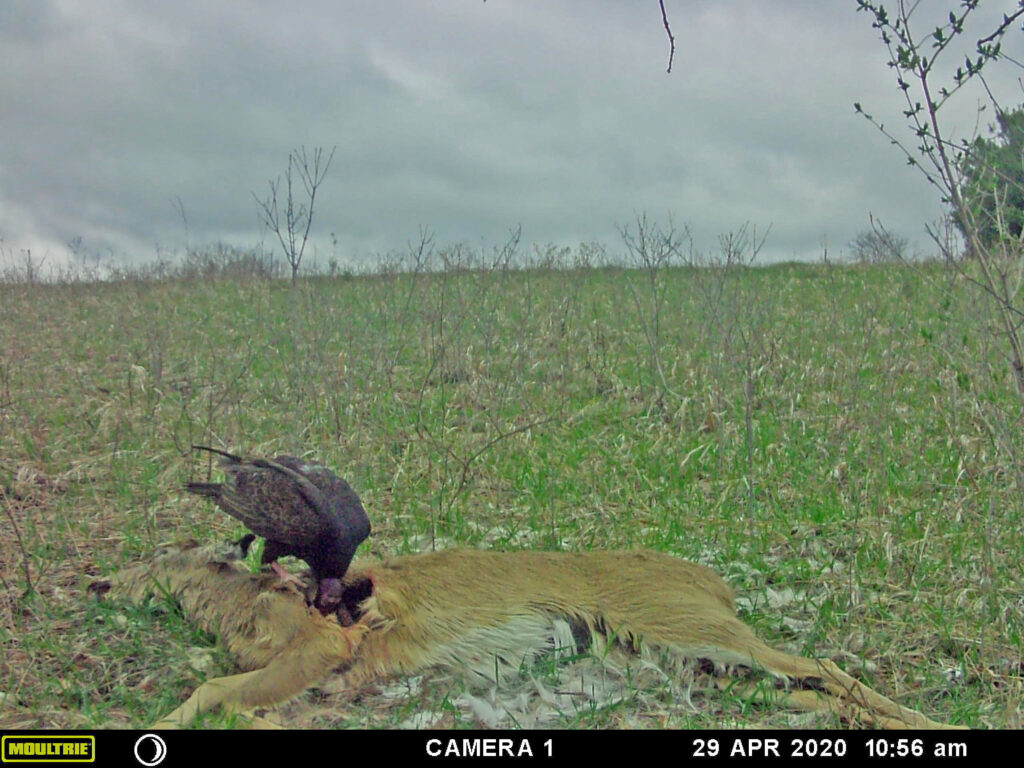
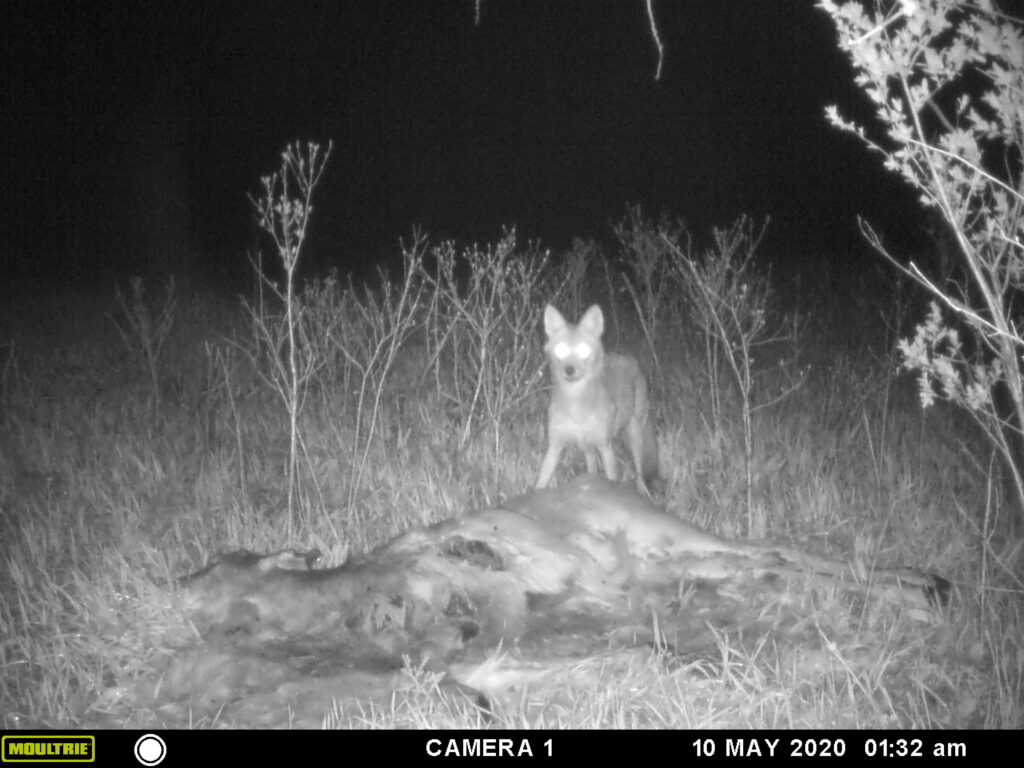



Thank you Holly, Angie, and Vicki for the kind words. “Trail cams” can be used in interesting ways, well beyond just scouting for the “big buck” on a deer trail. I have one two-picture sequence of a black bear: the first is of the bear’s face a couple feet in front of the camera, then the second is just a full frame of blurry pink, with out-of-focus white blotches. It took me a minute to figure out that the camera captured the inside of the bear’s mouth as it bit the camera. Capturing deer activity at “scrapes” can be very interesting–put “deer scrape pictures” into Google and see what you get. Sometime in the future I want to try attracting and photographing predators with a prepared scent sold for trapping. I’ll trap with the camera, though.
Road kill always makes me sad; glad to know some good came of this one! And great idea on Dean’s part to pull the carcass off the road, and then to mount a trail cam! Very cool to see the variety of creatures who fed on the deer.
This is a great use for roadkill that keeps the scavengers safely out of harms way. A wonderful educational tool to show how life gets passed on in the natural world, sustaining the next generation of life. Good thinking to photo the results, Dean, on Larrys great website !
Hi, Larry,
Nice job of capturing the various guests as they feast. Hard to see a dead deer, but knowing it provides sustenance for other creatures is wonderful.
Deer ate lunch at my front door today. They’re about the only company I can serve these days. LOL
Thanks for sharing.
Vicki